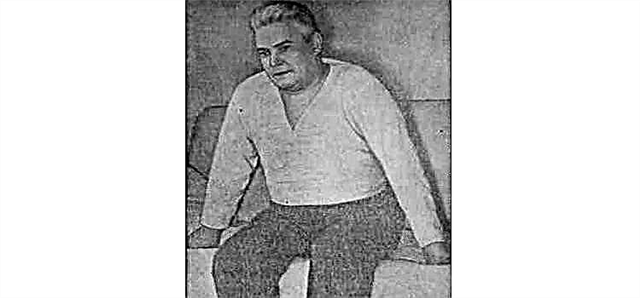Nasal obstruction (obstruction of the nasal passages) is a symptom that indicates the presence of swelling in the nasopharynx. If a baby has a stuffy nose, you need to determine the causes of the problem. Violation of nasal breathing in young children may indicate the development of infection, allergic reactions, injuries of the nasopharynx, abnormal structure of the nasal septum, penetration of foreign bodies into the nasal passages, etc.
All causes of the development of nasal obstruction can be divided into two broad categories: physiological and pathological. Most often, nasal congestion in infants is associated with the narrowness and curvature of the nasal passages. Runny nose, lacrimation and cough indicate allergic or infectious inflammation in the ENT organs. From the article you will learn about the causes of nasal breathing disorders in a small child and congenital pathologies that accompany the symptom.
The structure of the nasopharynx in infants
 The first thing parents think about when a newborn begins to snore and breathe heavily is that the baby has caught a cold. However, the development of infection in the respiratory tract is always accompanied by a runny nose, fever, swelling of the nasal mucosa, cough, etc. The absence of symptoms most often indicates that the cause of the violation of nasal breathing is physiological.
The first thing parents think about when a newborn begins to snore and breathe heavily is that the baby has caught a cold. However, the development of infection in the respiratory tract is always accompanied by a runny nose, fever, swelling of the nasal mucosa, cough, etc. The absence of symptoms most often indicates that the cause of the violation of nasal breathing is physiological.
In newborns, the nasopharynx is not quite the same as in adults. According to rhinologists, during the first year of life, it continues to form. That is why a stuffy nose in an infant does not always indicate the development of infectious or non-infectious pathologies.
In newborns, the auditory tube is very short and wide, so even a viral or bacterial rhinitis can cause complications in the ears.
The nasal cavity in infants is very narrow, its middle and upper passages are not fully formed, and the lower one is completely absent. In this regard, in children under 6 months of age, sniffling often occurs during nasal breathing. In addition, the nasal mucosa is very susceptible to irritation, so even inhalation of strong odors can provoke swelling and, accordingly, nasal obstruction.
Physiological causes
If a baby has a stuffy nose, the reason for this may be underdevelopment of the nasopharynx. During intrauterine development, the child does not breathe through the nose, so the nasopharynx adapts to environmental conditions for some time. Sometimes the nasal mucosa begins to produce excess mucus that stagnates in the nasal passages and interferes with normal nasal breathing.
Physiological rhinitis
Physiological rhinitis is one of the main causes of nasal congestion in infants. Household dust, blanket lint and lint entering the nose can irritate the mucous membranes. The body regards the penetration of foreign objects into the ENT organs as an attack that must be neutralized. As a result, the glands in the nasal cavity begin to produce nasal mucus, which clogs the nasal passages. Because of this, nasal breathing may be disturbed in a 2 month old baby.
Physiological rhinitis occurs in children from birth up to 3 months of age.
Typical manifestations of physiological rhinitis include:
- violation of nasal breathing;
- clear nasal discharge;
- lack of elevated temperature.
If the child grunts his nose at night, you need to try to free the nasal passages from the viscous secretion. For this, special aspirators and moisturizing drops are usually used, which thin the mucus and remove it from the respiratory tract.
Teething
A nasal obstruction in a child may be due to teething. Starting at four to six months, babies begin to erupt the central incisors in the lower jaw. During this period, the mucous membranes in the mouth and nasopharynx swell greatly, which leads to the development of nasal obstruction.
The first signs of teething occur in children a few days before the first milk teeth appear. These include:
- swelling of the gums and nasal mucosa;
- increased salivation;
- increased body temperature;
- rash on the chest (due to salivation).
During teething, immunity in children is weakened, as a result of which the likelihood of developing ENT diseases increases.
To make teething easier, it is recommended to give children non-steroidal anti-inflammatory drugs. The most optimal choice would be analgesics in the form of rectal suppositories - Panadol, Nurofen, etc.
Pathological causes
Very often, babies have a stuffy nose due to the formation of benign tumors in the nasal cavity. The growths block the nasal passages, which leads to the accumulation of mucus in the airways. In addition, disturbance in the aerodynamics of the nose can be caused by an abnormal structure of the nasal passages.

Polyps
Quite often, a baby has a stuffy nose due to the formation of polyps in the paranasal sinuses. Outwardly, benign tumors are similar to bunches of grapes, blocking the mouth of the paranasal sinuses. If the baby constantly grunts his nose, refuses food and does not sleep well, you should show him to the pediatrician.
Prolonged difficulty in nasal breathing is fraught with changes in the shape of the face and chest. Polyps grow rapidly and compress blood vessels in the nasopharynx, causing inflammation. Obstruction of the nasal passages leads to the fact that the child begins to breathe only through the mouth. Untimely removal of tumors is fraught with changes in the facial skeleton, hearing loss and a lag in the child's physiological development.
Adenoid vegetation
Adenoid vegetations are called hypertrophy (pathological enlargement) of the nasopharyngeal tonsil. If nasal breathing is disturbed in a two-month-old baby and hearing is impaired, it is recommended to undergo a rhinoscopic examination by a pediatric ENT doctor. Pathology most often develops after the transfer of respiratory diseases - tonsillitis, flu, nasopharyngitis, etc.
If the baby's nose is stuffy due to a swelling of the nasopharyngeal tonsil, the following symptoms will indicate this:
- Difficulty nasal breathing;
- excessive secretion of nasal mucus;
- loss of hearing and smell;
- poor sleep and irritability.
The proliferation of adenoids is promoted by diseases that provoke inflammation in the respiratory tract - measles, flu, tonsillitis, scarlet fever, nasopharyngitis, etc. Most often, pathology is diagnosed in children starting from 2 months of age. If treatment is not started on time, this can lead to infectious inflammation of the adenoid vegetations and the development of adenoiditis.
Choan atresia
Choanal atresia - obstruction of the nasal passages, which occurs due to the infection of the nasopharynx with bone or connective tissue. As a rule, congenital atresia manifests itself in babies under the age of 5 months. Choanas (internal nostrils) are located at the back of the nasopharynx. It is through them that the inhaled air enters the airways and, accordingly, the lungs.
In 90% of cases, choanal atresia develops as a result of choanal tissue overgrowth. Pathology occurs even during the period of intrauterine development of the child during the formation of the nasopharynx. The disease is detected in the first 3-4 months of a child's life. In most cases, atresia is combined with other intrauterine malformations:
- cleft palate;
- deformation of the nasal septum;
- doubling of the ear tragus;
- gothic sky.
Newborn babies breathe mainly through the nose, so choanal atresia can lead to asphyxiation (suffocation).
To cure life-threatening pathology, newborns undergo surgery. Correction of congenital atresia consists in the removal of connective and bone tissue that interferes with normal nasal breathing.
Infectious causes
 Why is the baby's nose stuffy? In about 83% of cases, nasal breathing is caused by inflammation in the respiratory tract. If a child grunts his nose badly, most likely the reason lies in the obstruction of the nasal passages. Swelling and inflammation of the mucous membranes stimulates the abundant secretion of nasal mucus, which literally clogs the choanas and prevents normal breathing. Most often, in infants, the nose does not breathe due to the development of the following diseases:
Why is the baby's nose stuffy? In about 83% of cases, nasal breathing is caused by inflammation in the respiratory tract. If a child grunts his nose badly, most likely the reason lies in the obstruction of the nasal passages. Swelling and inflammation of the mucous membranes stimulates the abundant secretion of nasal mucus, which literally clogs the choanas and prevents normal breathing. Most often, in infants, the nose does not breathe due to the development of the following diseases:
- sinusitis is a bacterial, viral or fungal inflammation of the accessory sinuses, i.e. sinuses;
- rhinopharyngitis - an infectious inflammation that covers the mucous membrane of the nose and throat;
- flu - inflammation of the airways, which is accompanied by fever and malaise;
- Measles is a severe viral disease characterized by inflammation of the oral mucosa and nasal passages.
To help your baby cope with the infection, the doctor will prescribe gentle antiviral or antibacterial drugs. If the nose is clogged with mucus, it will have to be removed with a rubber bulb or a special nasal aspirator. To reduce the viscosity of the nasal secretion, it is recommended to instill in the nose isotonic drugs - "Aqualor Baby", "Nazol Baby", "Otrivin Baby", etc.
Conclusion
Obstruction of the nasal passages in infants is often associated with underdevelopment of the nasopharynx. For several months, the nasal mucosa continues to form, therefore, for 8-10 weeks, infants may be bothered by a physiological runny nose. In the fourth to sixth month of life, babies begin to erupt their teeth, which is one of the reasons for the swelling of the nasopharyngeal mucosa.
Nasal obstruction in newborns is often associated with non-infectious pathologies. Adenoid vegetations, polyps and other benign tumors can provoke blockage of the nasal passages. However, in most cases, babies do not breathe in their nose due to an infectious lesion of the upper respiratory system. Inflammation leads to swelling of the mucous membrane and, as a result, narrowing of the inner diameter of the choans.



